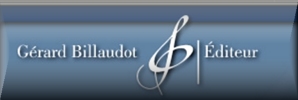
Notable performances/recordings by
Trio Solisti : Maria Bachmann, violin; Alexis Pia Gerlach, cello; Jon Klibonoff, piano; New York, May 2000, January 2005
Manhattan Chamber Orchestra: Karen Rostron, violin, Alexandra MacKenzie, cello, Darrell Rosenbluth, piano. Merkin Hall, New York, March 10, 2002
Piano Trio Society & ILAMS: Guillem Calvo de Albeniz, violin; Tania Lisboa, cello; Bertrand Giraud, piano. Steinway Hall, London, December 2007
Fantaisies et Découvertes:Fréderic Chatoux, flute; Delphine Biron, cello; Bertrand Giraud, piano; Paris, October 2009
Strings and Keys: Laurie Syer, violin; Joel Stobbe, cello; Janet Hammock, piano; Alberta, July 2010
I. Tango
II. Payada
III. Valsecito criollo
The title of the piece quotes the name of one of the tangos composed by Astor Piazzolla during the seventies, Buenos Aires hora cero (Buenos Aires at Midnight). The purpose of the quotation is to pay tribute to this composer, who was able to blend on the one hand his origins as a bandoneón player in one of the main tango orchestras of Argentina, and on the other hand his later rigorous classical training, creating the unique sound of his Nuevo Tango.
Each of the three movements of my piece is based on a specific musical subgenus within the tango repertory. The first, a "square" tango, is in quadruple meter and ternary form. In the A section, which follows closely the structure of a typical sung tango, the flexibility of the rhythm and the written-out rubato mirror the performance practice of the style. After a short transition that establishes a slower tempo, the cello introduces the subject of the middle section, shortly answered by the violin. The sharp rhythms and strong dynamic contrasts of the texture mimic a passionate and aggressive confrontation, much in the way in which two compadritos (a bully character of the suburbs) would fight with knives in the dark streets of Buenos Aires at the beginning of the twentieth century. Little by little, the tempo gradually speeds up, the piano enters the conflict, and the "fight" turns into a sensuous choreography with a decidedly milonga flavor. This section’s rhythmic and contrapuntal intensity makes it perhaps the climax of the movement. Later, the fugal subject is once more stated by the cello with a accompaniment in fast arpeggios by the piano. Introduced by a slower retransition, a modified A section restores the original tonal center and rounds out the movement with an emphatic coda.
During the second half of the nineteenth century, the gauchos (or "cowboys") were the main characters living in the prairies of Argentina. Back then, a typical gaucho would usually stop by a pulpería ("saloon") from time to time, and there he would have a break between badly paid jobs. In that context, Payada was the name of a sort of "duel of words" between two or more gauchos. One of them, accompanying his words with a guitar, would share his own misfortunes and reflections with another, creating the rhymed verses as he went along. My second movement, of a more intimate character, is based on this improvisational art-form. Hence, each one of the three musical tempi and textures present in the movement picture specific imagery within this setting: the slow sustained chords of the beginning "paint" the loneliness of the prairie, perhaps at sunset; the rhythm of the second phrase features the slow pace of the walking horse; the alternation between the recitative textures and the rhythmic figure represent the improvisation itself, accompanied with the guitar.
The last movement, a Valsecito criollo (Little Creole Waltz), is in a modified rondo form. Although its character is that of a fast waltz, it anyway shares the melancholy and tone of the typical tango. In the last reprise of the theme, and as in the first movement, the original theme becomes the subject of a strict fugue, which serves to climax the entire piece. Just before the strident conclusion, a short contemplative cadenza recalls the slower moods of the two previous movements.
The piece, in its original version for string quartet, was co-winner of the 2000 Robert Starer Composition Award. Approximate duration: 18 minutes.
Copyright © 1999 by Martín Kutnowski, A.S.C.A.P.
Copyright © 2009 by Gérard Billaudot Editeur. All rights reserved.
Request your score (Vn. or Fl., Vc., and Piano) from:
di-arezzo The World of Sheet Music